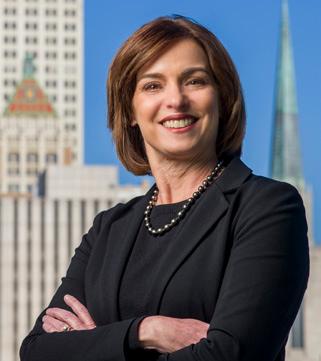
1 minute read
from the president
Leigh B. Goodson

Advertisement
We graduate them faster.
It is a core belief and value of the college, true literally and philosophically. “We build community, inside and out, through collaboration, service, sustainability, and social and financial responsibility.”
As an institute of higher education, the primary way we build and strengthen our community is by educating our population. Education is still the surest way to enhance an individual’s – and by extension, their family’s, and the community’s –economic potential.
Because we serve more Oklahomans than any other college in the state, it is our responsibility to educate our students better, faster, and as affordably as possible.
We do this in many ways.
We keep the cost of a credit hour low. We offer Tulsa Achieves, which provides free tuition and fees to Tulsa County high school graduates. We are able to do so because of local appropriations built into the College’s charter. City leaders and College founders knew back in 1970 the value the positive reciprocal relationship would bring Tulsa.
We graduate more of our students. In the past decade, our initiatives have more than doubled our three-year graduation rates. We focus on resources and retention and on processes that place our students in the best position to succeed. And they are.
The number of credits students are taking before they earn a credential is decreasing. Better advising, case management, and intentional work with our transfer partners is paying off. Fewer classes mean less time spent in school, reducing the potential for accumulated debt and shortening the time it takes to enter the workforce.
We also partner with community high schools to provide extensive dual-credit opportunities, which means our area high school students can graduate high school with a head start on their college career. For instance, our EDGE program – Earn a Degree, Graduate Early – allows high school students to graduate from high school with an associate degree. It’s a head start that saves students, and parents, money.
Some of these initiatives do not always help our bottom line. Graduating students quicker, with fewer classes and less cost to families, may mean less money coming in. But the payoff is greater than enrollment numbers. Getting students down the path quicker, which benefits students, parents, and employers, is of better service to our Community.
As always, thank you for all you do, and for being part of our community.




